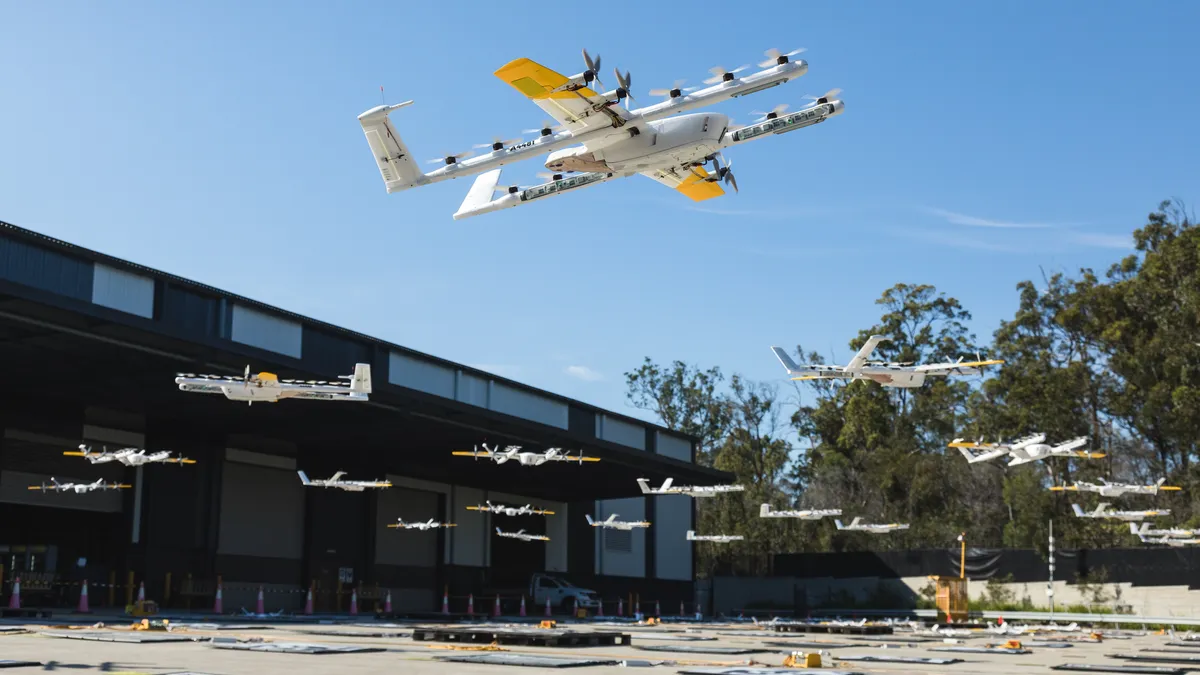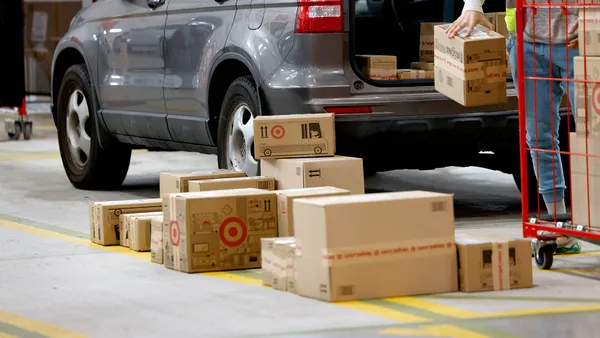Dive Brief:
- Wing, a drone delivery company owned by Google parent Alphabet, expects its drone delivery network will be able to handle millions of deliveries at a lower cost than ground transportation by mid-2024.
- Driving this expansion will be the Wing Delivery Network, which CEO Adam Woodworth said in a blog post is a decentralized, automated system able to support high-volume delivery activity. "The network is managed by logistics automation software that constantly allocates hardware resources at a city or metro-wide scale.”
- Wing’s drones can support curbside pickup and can easily be integrated into retail and restaurant operations, according to Woodworth. The company plans to roll out parts of the network's capabilities over the next 12 months and demonstrate them in new locations worldwide.
Dive Insight:
Ramping up delivery activity will be critical for industry players to secure a healthy, long-term business that shippers would choose over other methods of transportation.
"The economics of drone delivery improve dramatically with scale, and all of the salient metrics (access, safety, and sustainability) become far more meaningful at large volumes," Woodworth said.
A drone delivery network making millions of deliveries would be a significant leap from what Wing and similar companies currently handle. Wing has made 300,000 commercial drone deliveries while serving 10 locations across three continents, according to its website.
The software powering the Wing Delivery Network manages three elements, Woodworth said: the drones; the pads on which they takeoff, land and recharge; and "AutoLoader" devices that preload packages for automatic drone pickup.
Drones aren't locked into a certain pattern of movement, allowing them to adjust to the network’s needs. In areas with multiple charging spots, they will have the flexibility to meet peaks in customer demand across entire cities, Woodworth said. Wing pilots can oversee fleets of autonomous drones in the network to make sure they operate safely and efficiently.
In a video accompanying the post, Woodworth compared the network to ride-sharing platforms like Uber and Lyft.
"Rather than having fixed routes that the aircraft fly or rather than having fixed assets deployed throughout a region, you can have a network of aircraft that can go and pick up a box one place, drop it off at another place, have that airplane fly then to another location to load balance resources, and just generally have a more fluid movement of aircraft and resources throughout a region," Woodworth said.
In 2022, Wing made progress in its efforts to deploy drone delivery at scale. It launched a "store-to-door operating model" in which a small drone fleet operates directly from existing retail locations, one example being a Walgreens pharmacy in Dallas. The company's largest delivery operation in Logan, Australia, made more than 1,000 deliveries on some days.
But ramping up a drone delivery network is an endeavor filled with obstacles, both in terms of regulatory restrictions and consumer acceptance. Wing's drone operations have reportedly encountered noise complaints in Australia, for example.














